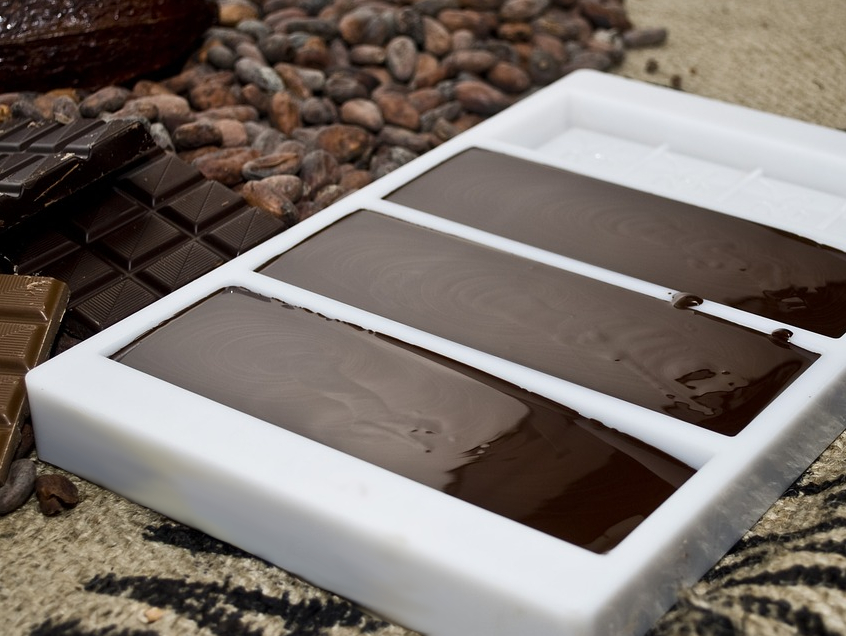Chocolate is a mixture of cocoa solids, cocoa butter, sugar, and other ingredients that interact with each other in complex ways. For example, the fats in chocolates can remain liquid or crystallize into different phases with distinct melting points. The temperature at which a particular chocolate melts affects its taste and texture—a melting point near body temperature is considered ideal. When chocolatiers make bars, they usually pour tempered chocolate into a mold and let it cool at temperatures that favor the most desirable crystal form.
Fumitoshi Kaneko, Osaka University, Japan, and colleagues have investigated how the mold’s surface, which conveys heat more efficiently than air and also provides a physical barrier, affects the crystallization of fats in chocolate. The team analyzed the structure of fat components at three different positions in a chocolate bar using polarized Fourier transform infrared (FTIR) spectroscopy with attenuated total reflection (ATR) sampling, a technique that allows the direct examination of solid or liquid samples without further preparation.
The researchers first manufactured a chocolate paste from cocoa, cocoa butter, sucrose, skim milk powder, lactose, lecithin, and flavoring agents. The ingredients were mixed, refined using a roller mill, and subjected to a conching process, in which the chocolate is agitated. The chocolate paste was melted at 50 °C, cooled to 35 °C, and poured into polycarbonate molds. The filled molds were refrigerated for 15 min. The chocolate bars were demolded and aged for one week at room temperature before the FTIR measurements.
The team found that the mold-side surface of the resulting chocolate bar contained more highly ordered, regularly packed fatty acid chains. The air-side surface contained more disordered, irregularly packed chains. The center of the bar showed characteristics between these two. The spectra on the mold side resembled the properties of the most desirable crystal form, the so-called polymorph V, more closely than those recorded on the air side. These results could be explained by the large difference in thermal conductivity between the mold’s material and air, which causes the crystallization to proceed smoothly in the region close to the mold surface.
These results suggest that a chocolate bar’s structure is much less uniform than previously thought. Improving the crystallization process might lead to better-tasting and better-looking chocolate bars with a more favorable melting behavior.
- Polarized FTIR ATR Spectroscopic Study on the Structure of Chocolate: Influence of Mold on Fat Crystalline Structures,
Fumitoshi Kaneko, Kiyomi Oonishi, Hidetaka Uehara, Hironori Hondoh,
Cryst. Growth Des. 2021.
https://doi.org/10.1021/acs.cgd.1c00027
Also of Interest
- Chocolate – The Noblest Polymorphism,
Klaus Roth,
ChemistryViews.org 2010.
https://doi.org/10.1002/chemv.201000021



